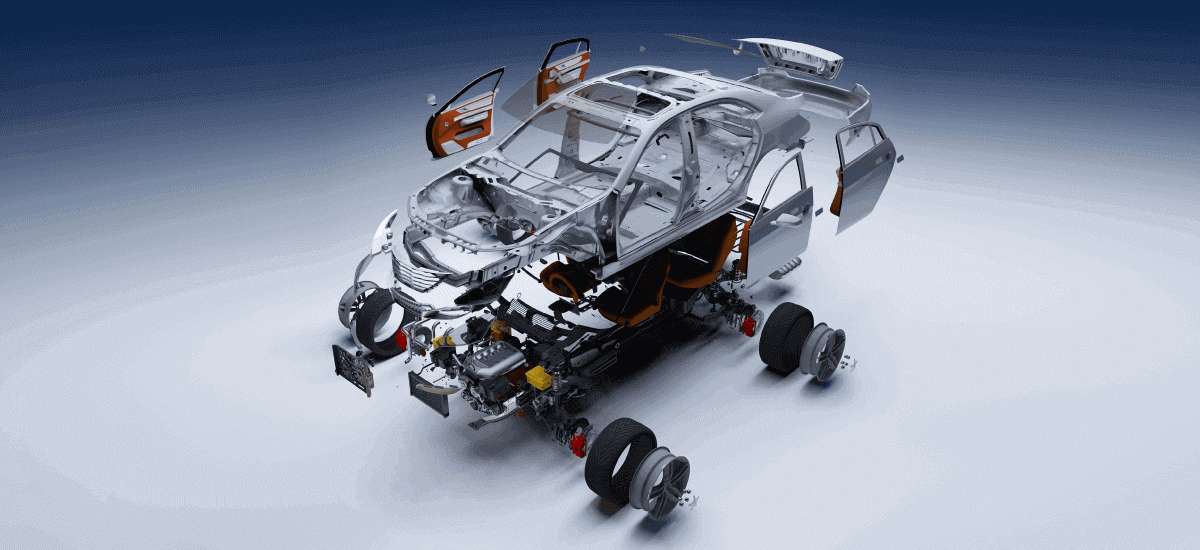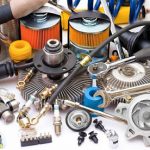Understanding the World of Auto Parts: A Comprehensive Guide
The automotive industry is an intricate ecosystem, where each component plays a critical role in ensuring that vehicles function smoothly, efficiently, and safely. Auto parts, often seen as the unsung heroes of the automobile world, are the lifeblood of any vehicle. From the engine that powers the car to the tires that grip the road, every part is indispensable in keeping the vehicle in optimal working condition. As technology advances, the complexity of these parts has increased, yet the importance of understanding them remains as crucial as ever for both car owners and professionals in the automotive industry.
The Anatomy of a Car
A modern automobile is a masterpiece of engineering, with thousands of individual parts working in tandem. These parts can be broadly categorized into several systems, each with specific components designed to perform certain functions. The major systems of an automobile include the engine system, the transmission system, the suspension system, the braking system, and the electrical system.
The Engine System
The engine is the heart of the vehicle, and understanding its components is fundamental to understanding how a car works. At its core, the engine consists of various parts that work together to convert fuel into power. The primary components include the cylinder block, pistons, crankshaft, camshaft, and valves. Each part has a distinct role in the internal combustion process, converting energy from fuel into mechanical energy.
Additionally, the cooling system—which includes the radiator, water pump, and thermostat—prevents the engine from overheating. The exhaust system, composed of components like the exhaust manifold, catalytic converter, and muffler, ensures that harmful gases are expelled safely from the engine.
The Transmission System
The transmission is responsible for transferring power from the engine to the wheels, allowing the vehicle to move. It consists of several parts, including the clutch, gears, differential, and transmission fluid. In manual transmissions, the driver controls the gears using the clutch pedal and gear lever, while in automatic transmissions, the system adjusts the gears automatically based on speed and load.
Modern cars have seen the rise of continuously variable transmissions (CVTs) and dual-clutch transmissions (DCTs), which offer smoother gear transitions and improved fuel efficiency.
The Suspension System
The suspension system is essential for maintaining a smooth and stable ride. It absorbs the shock and vibrations from the road, ensuring that the vehicle remains level and comfortable to drive. Key components in this system include the shock absorbers, struts, springs, and control arms.
A well-maintained suspension system enhances the handling of the vehicle, reduces wear and tear on other components, and improves passenger comfort. It also contributes to the safety of the vehicle by ensuring that the wheels remain in proper contact with the road.
The Braking System
The braking system is perhaps one of the most critical safety components of any vehicle. Without it, controlling speed or stopping the vehicle becomes impossible. The main components of the braking system are the brake pads, rotors, calipers, and brake fluid.
There are two primary types of brake systems in modern vehicles: disc brakes and drum brakes. Disc brakes, which are more common in modern vehicles, use brake pads to clamp down on a rotating disc to slow the car. Drum brakes, on the other hand, use shoes that press against the inside of a rotating drum to create friction.
Modern vehicles also come equipped with advanced safety technologies such as Anti-lock Braking Systems (ABS), which prevent the wheels from locking during sudden stops, and Electronic Stability Control (ESC), which helps maintain control of the vehicle during skidding or loss of traction.
The Electrical System
With the rise of electric cars and hybrid models, the importance of the electrical system in modern vehicles has grown significantly. The electrical system is responsible for powering a wide array of components, from the ignition system and headlights to the climate control and infotainment systems.
The battery, alternator, and starter motor are the core components of this system. The battery provides the initial power to start the engine, while the alternator keeps the battery charged as the vehicle runs. The starter motor is responsible for turning the engine over when you turn the key or press the start button.
In addition to these, the wiring harness, fuses, and sensors that monitor everything from tire pressure to engine temperature are also integral to a car’s electrical system.
The Evolution of Auto Parts
Over the years, the design and function of auto parts have evolved significantly. In the early 20th century, cars were relatively simple machines, with fewer components and mechanical systems. However, as technology progressed, so did the sophistication of automotive parts.
The introduction of electronic control units (ECUs) allowed vehicles to become more intelligent, with sensors and computers governing everything from engine performance to fuel efficiency. Hybrid and electric vehicles introduced entirely new systems, such as regenerative braking and high-voltage battery packs, which necessitated the development of specialized auto parts and tools.
Additionally, as environmental concerns have become more prominent, automakers have focused on creating greener, more fuel-efficient vehicles. This has led to innovations in materials, such as lightweight composites and alloys, which reduce the overall weight of the car, and in engine design, such as turbocharging and hybrid powertrains, which improve fuel efficiency without sacrificing performance.
The Importance of Quality Auto Parts
Whether you are a car owner or an automotive professional, the quality of auto parts cannot be overstated. Cheap, low-quality parts may save money in the short term, but they often come with hidden costs. Poor-quality components can lead to frequent breakdowns, safety issues, and premature wear on other parts.
When purchasing auto parts, it is crucial to consider the source and reputation of the manufacturer. OEM (Original Equipment Manufacturer) parts, which are made by the car’s original manufacturer, tend to offer superior quality and reliability. Aftermarket parts, on the other hand, can vary widely in quality, and while they may offer cost savings, they may not always meet the exact specifications of the original parts.
Moreover, when replacing auto parts, the expertise of the technician performing the installation is just as important. Proper installation ensures that the parts work as intended and do not cause additional problems down the line.
Conclusion
Auto parts are essential to the functioning of any vehicle, and understanding the different systems and components can help car owners maintain their vehicles and make informed decisions when repairs or replacements are necessary. As automotive technology continues to advance, new innovations in parts and systems will keep reshaping the way vehicles operate. Whether you’re a seasoned car enthusiast or someone simply looking to better care for your vehicle, having a basic understanding of auto parts and their functions is invaluable. As with all things mechanical, regular maintenance, high-quality components, and professional expertise are key to ensuring that your vehicle stays in prime condition for years to come.





